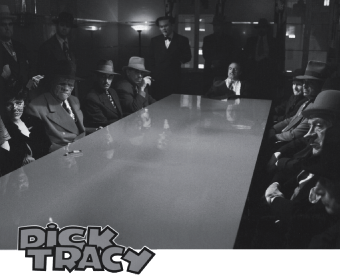Movies and Film: Preproduction
Preproduction
After the dust has settled, the business of making a film actually begins. Preproduction is the stage at which war plans are formed: The rest of the crew and cast are hired, the shooting schedule is planned, and so on. Again, the producer is very active here. The director is now playing an increasingly large role in determining how the film is going to be shot.
Storyboarding
Either during or after the negotiations, others—generally the director and writer—are figuring out how to get from script to shooting script. The process can be tighter or looser. Some directors try to leave room for on-site improvisation. Others don't. Alfred Hitchcock, for example, had more or less entirely planned out the shooting of his films before the first camera setup.
The storyboard is an essential part of this process. It is the narrative of the film in pictures, a sort of flow chart showing how one shot derives from the former shot and gets to the next. It can be more or less detailed, perhaps providing cues for sound (dialogue and/or music) and for character motion.

The feeling of Contract negotiations: film still of board meeting of gangsters from Dick Tracy (1990).
Scripting
The screenplay will probably have gone through a dozen drafts by this point. (This is why there are sometimes so many writers in the credits.)
Location, Location, Location
Since the 1950s and the influence of the Italian Neorealists and the French New Wave, American filmmakers have tended more and more to leave the studio for the realism of the great big world. As with most other decisions, the consideration is partly economic and partly aesthetic. Toronto is not only a cheaper city to shoot in, it looks more like 1940s Los Angeles than Los Angeles does.
During or after the storyboard stage, the filmmakers consider the best locations to shoot. In the studio or on location? If on location, which city? If San Francisco, which locales? Does the director want to shoot famous landmarks (as in just about any Hitchcock film), or does the filmmaker want a location one block away from the tourist traps (Jim Jarmusch's Stranger Than Paradise [1984], for example, which takes place a couple blocks off of Memphis's Beale Street, on a very seedy street)? At some point, the location scout is sent out to figure out the best places to set up camp.
Short Cuts
There are brilliant exceptions to this tendency to save money by leaving the studio. Eschewing both economic considerations and a traditional realist aesthetic, Francis Ford Coppola built Las Vegas from the ground up in One from the Heart (1982), rather than shooting his film in the real Babylon in the desert.
Technical Concerns
Preproduction is also the moment at which many of the various creative technicians begin work: costume designers, production designers, modelers, sound designer, and so on. Sets are now constructed. The music director will begin working on a score and incidental music for the film, though this job may still be going on straight through postproduction, because it is intimately tied to the sound "mixing" process. The special effects department must begin creating effects before, alongside, and after the principal photography has taken place. These days that department is often a digital effects crew.
Most of the creative staff have to figure out how to coordinate their products with the story. If the filmmakers are really trying to produce a masterpiece, they will try to coordinate music, set design, special effects, costume, decor, and other aspects of the mise-en-scne before the shooting begins. Lower-budgeted flicks will make this a postproduction concern. If the film is an adaptation of the eighteenth-century romantic comic swashbuckler Tom Jones (an actual and absolutely corking 1963 British film), will the music be romantic, comic, or swashbuckling? Will it be harpsichord music or something more contemporary? If comic, how well will it match with the austere but opulent eighteenth-century interiors?
To which mood should the actors respond: the comic or the romantic? Will the director stay in the studio, or will he use those terrific "stately homes of England," manors, estates, manses, palaces, and county seats the British have managed to keep alive since at least the Elizabethan era?
If on location, will the director use ambient, natural lighting (as in the eighteenth-century period film Barry Lyndon [1975]), or will he bring in big spots to liven things up?
Production design, costume, and decor are all carefully delineated in sketches and models before shooting. Though the largest part of the comedy of Austin Powers: International Man of Mystery (1997) may be in lead comic Mike Myers, much of the comedy is simply in the anachronistic 1960s clothing and decor: the mod suits and the modular chairs.
Excerpted from The Complete Idiot's Guide to Movies and Film © 2001 by Mark Winokur and Bruce Holsinger. All rights reserved including the right of reproduction in whole or in part in any form. Used by arrangement with Alpha Books, a member of Penguin Group (USA) Inc.
To order the e-book book direct from the publisher, visit the Penguin USA website. You can also purchase this book at Amazon.com.







